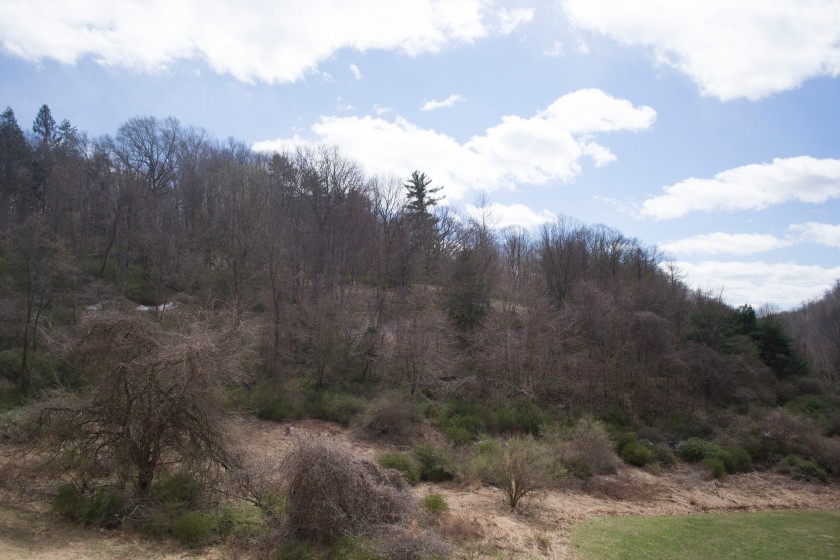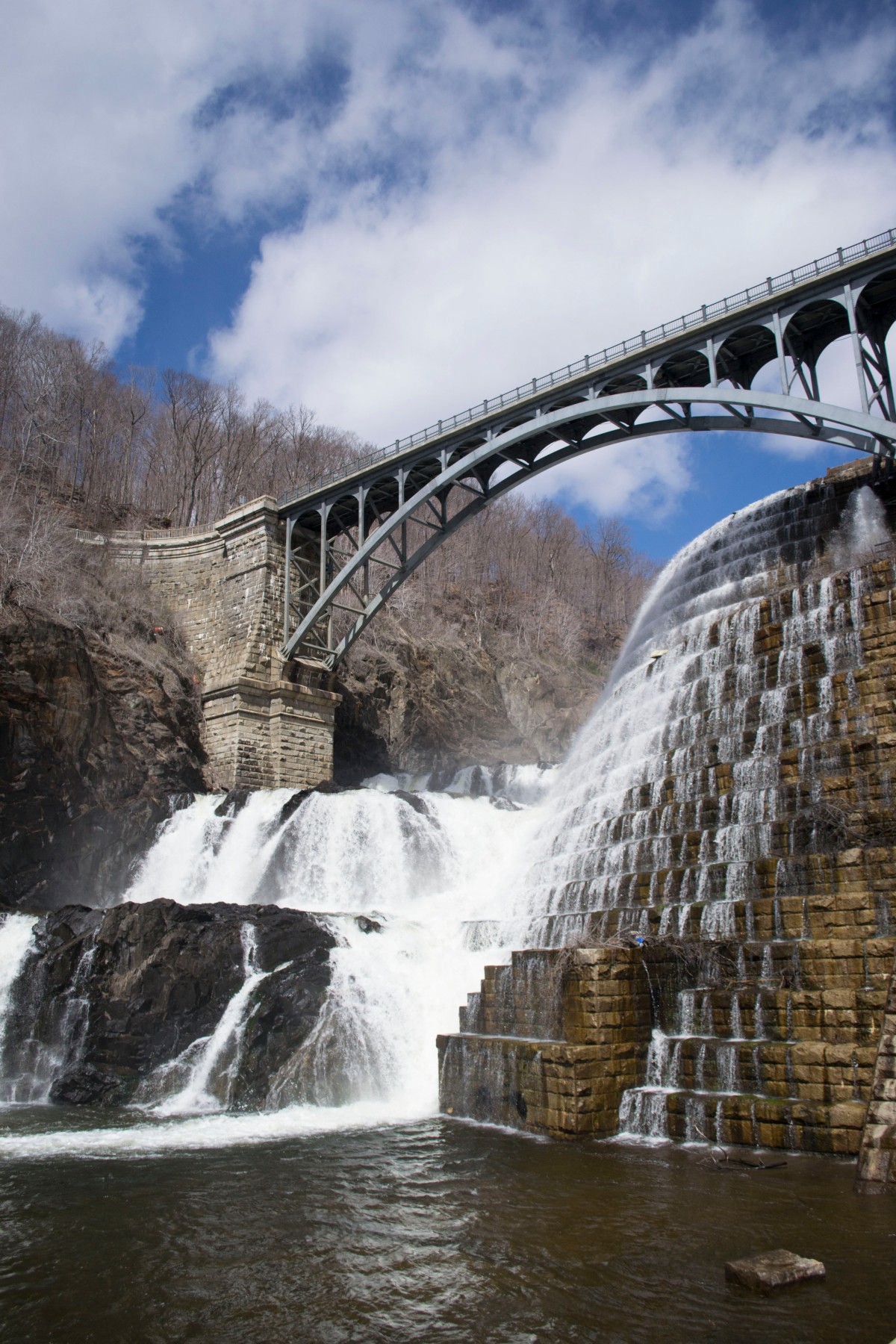Before beginning this post I want to make it clear that I spent all of ten minutes in this park. I had heard about the park from a friend and, while on a hiking trip the first weekend in April, I finished hiking early and was able to drive over to the park with the extra time before I had to return my rental car. I was able to look around and get some pictures of the New Croton Dam, but I did not get a chance to hike on the trail.
The dam is 200 feet tall and was the first large-scale masonry dam in the US. It was built from 1892-1906 and was originally meant to bring drinking water to New York City, but the needs of NYC soon outgrew the capacity of the dam. To create the dam, the riverbed had to be diverted and dried, then a canal was built to alter the flow of the river. While on top of the dam, one can see the Croton Reservoir, which can hold 34 billion gallons of water. There are many fish in the reservoir, including bass and perch species. Rowboats are allowed on it, but must first be approved by the NY Department of Environmental Protection.

When you drive into the park, you immediately get a view of the dam. It’s beautiful with the water cascading off the stones, before flowing under the bridge. On the day I visited, the view was marred slightly by a fenced off spot next to the side of the dam. Across the bridge, there is a wide, open space with plenty of picnic tables, a playground, a baseball field, and bathrooms.
On one side of the field, after flowing off the dam, is the river, which is open for fishing, but not for swimming. Though in many places in the Hudson Valley it is not recommended to eat more than one fish meal per month for men over fifteen and women over 50 due to mercury contamination, the NY Health Department does say it is okay to eat up to four fish meals per month for people of all ages from the New Croton Reservoir as of 2014. It is not safe enough to swim in, though that might have more to do with the river than the water quality.

On the other side of the field there is a wood. Like most of the woods I’ve visited in New York, it was covered in vines. The one trail in the park leads up through the woods to the top of the dam and also connects to the beginning of the Old Croton Aqueduct Trail (stay tuned for a post about that trail), which stretches 26.2 miles to Van Cortland Park in the Bronx. The trail is the only way to reach the top of the dam. There is a road that crosses over the top, but cars have been prohibited to cross it since 9/11. If someone is in a hurry to see the top of the dam, they can park on the side of the road before the blockade and cross on foot, though signs are posted that say parking is not allowed.
Back in the main part of the park there is a fountain, which sometimes is operational. I unfortunately didn’t get to see it working, but, when it is active, the pressure of the water in the reservoir powers it. Other than the invasive vines and some trash overflowing from the bins, the park appears to be well kept. Though this park might not be impacted by rising sea levels, the dam has large environmental impacts, which must be acknowledged. Dams prevent the migration of fish and altering riverbeds diminishes areas where fish can spawn in river bottoms. Another impact is that sediment is trapped by the dam, which can lead to the river being eroded further downstream. This park may be enjoyable and the dam a pretty photographic opportunity, but it is not without its environmental consequences.
Helpful Links:
http://parks.westchestergov.com/croton-gorge-park
http://www.health.ny.gov/publications/6545.pdf

